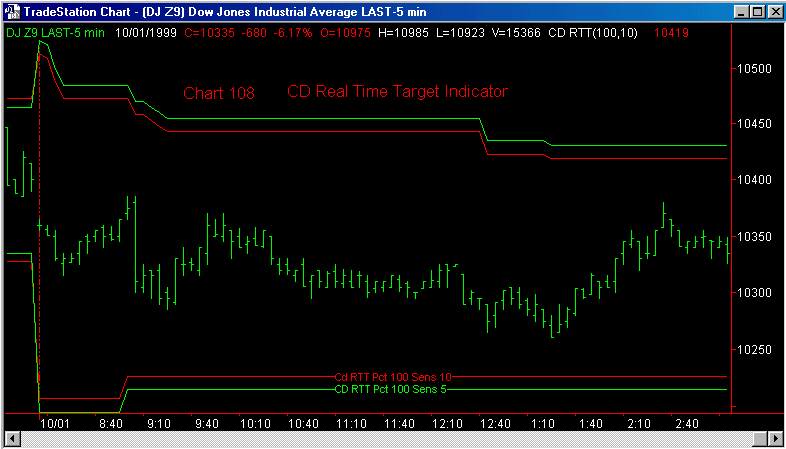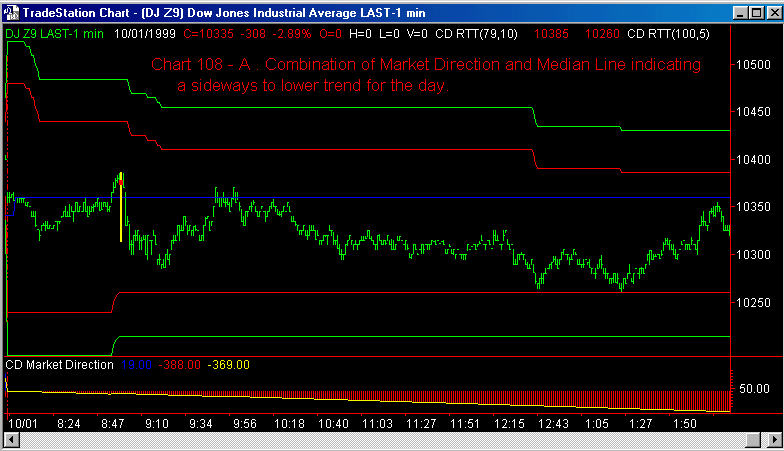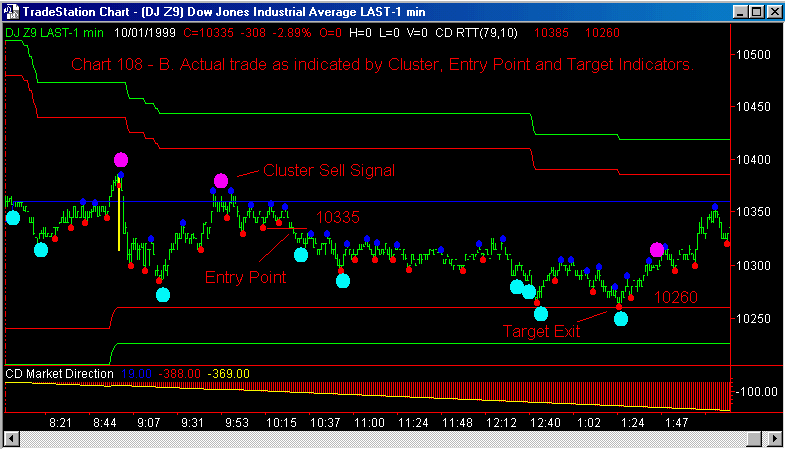Support Resource Center
Chart 108
CD Real Time Target Indicator

Chart 108 as it appears on the Full Spectrum Trader Video

Chart 108
CD Real Time Target Indicator

Chart 108 as it appears on the Full Spectrum Trader Video

The chart above adds the market direction and
the median line indicators to the chart used
in the video.
During the video presentation reference is
made to the direction of the market being determined as sideways to lower
for the day. This chart graphically demonstrates the plots of these two
indicators.
Note that the Median Line has a close of the Signal Bar above the horizontal blue line but has the majority of the activity below the line, indicating a sideways day for the rest of the session. Also note that the Market Direction Indicator is indicating a declining market is expected. The combined interpretation of the two indicators is therefore fore a sideways (median line) to lower (market direction) day.
Also of interest is the activity of the market when it rallies back to the median line between 9:34 and 9:56. Note how the market respects the resistance as formed by the median line and heads lower for the next three hours.
Note that after the early (9:00 am central time) designation of a sideways to lower day that the lower target point is reached at 1:20 pm, providing an excellent exit point for our short trade which would have been taken in the direction of the trend for the day.
Actual Trade

This chart adds to Chart 108 - A by adding the CD Cluster and CD Entry Point indicators so that we may describe a trade as designated by all the trading tools shown on the screen above.
With the major trend being defined as sideways - lower after 9:00 am, we will be looking only to the short side today. The second Cluster Sell Signal (marked above) represents our first reasonable sell signal as the first cluster sell came at the signal bar, which is a bit early.
Now that we have defined a selling window using the cluster indicator, we look to the CD Entry Point Indicator to define an exact entry point, marked on the chart above. Recall that the entry point indicator requires several bars of data to calculate, therefore making the next, slightly higher point unavailable since it would not be on the chart until a bar or two later than our entry point.
By placing a sell stop order at the level designated by the entry point indicator we are automatically entered into a short position when the market trades through our stop order. The result of this activity is a new short position at the 10335 level.
Note that the market gradually drifts lower, respecting both the major and minor trends of the day as defined by our indicators.
Our short position is then exited at the target price of 10260 for a 75 point profit. In the Dow Futures, valued at $10.00 per point, this trade turns a profit of $750.00 before commissions and slippage.